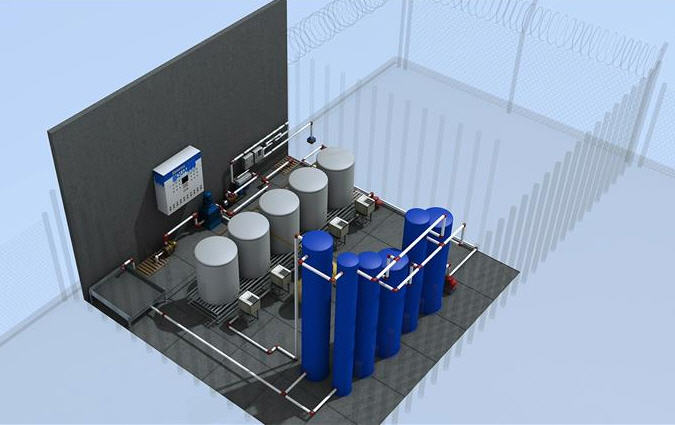Engineers purify sea and wastewater in 2.5 minutes

The System PQUA, works with a mixture of dissociating elements, capable of separating and removing all contaminants, as well as organic and inorganic pollutants. “The methodology is founded on molecularly dissociating water pollutants to recover the minerals necessary and sufficient in order for the human body to function properly nourished”, technical staff explained.
Notably, the engineers developed eight dissociating elements, and after extensive testing on different types of contaminated water, implemented a unique methodology that indicates what and how much of each element should be combined.
“During the purification process no gases, odors nor toxic elements that may damage or alter the environment, human health or quality of life are generated” said the Mexican firm.
The corporation has a pilot plant in their offices that was used to demonstrate the purification process, which uses gravity to save energy. We observed that the residual water in the container was pumped to reactor tank, where it received a dosing of the dissociating elements in predetermined amounts.
In this phase solid, organic and inorganic matter as well as heavy metals are removed by precipitation and gravity; and a sludge settles at the bottom of the reactor. The latter is removed and examined to determine if it is suitable to use as fertilizer or manufacture construction materials.
Subsequently, the water is conducted to a clarifier tank, to sediment the excess charge of dissolved elements; then the liquid reaches a filter to remove turbidity and is finally passed by polishing tank that eliminates odors, colors and flavors. The treated water is transported to a container where ozone is added to ensure its purity, and finally is ready to drink. Indeed, the resulting liquid is fresh, odorless and has a neutral taste.
“We have done over 50 tests on different types of wastewater and all have been certified and authorized by the laboratories of the Mexican Accreditation Agency (EMA). Also, the Monterrey Institute of Technology and Higher Education (ITESM), the College of Mexico and the National Polytechnic Institute (IPN) have given their validation that the water treated with our technology meets the SSA NOM 127 standard, which indicates the parameters and quality characteristics for vital liquid to be used for human consumption, ” says the Corporate Jhostoblak.
Moreover, they report that this development is protected under trade secret in America and soon will get the same record in Switzerland. Its implementation in the market will depend on the needs of users and the issue of new laws regarding use, consumption and water discharge.
For more information, enter Corporate Jhostoblak’s website www.sistemaspqua.weebly.com or write to vrcorporativo@gmail.com. (Agencia ID)
For further information, please contact:
José Gotés
Media Contact
All latest news from the category: Ecology, The Environment and Conservation
This complex theme deals primarily with interactions between organisms and the environmental factors that impact them, but to a greater extent between individual inanimate environmental factors.
innovations-report offers informative reports and articles on topics such as climate protection, landscape conservation, ecological systems, wildlife and nature parks and ecosystem efficiency and balance.
Newest articles

Trotting robots reveal emergence of animal gait transitions
A four-legged robot trained with machine learning by EPFL researchers has learned to avoid falls by spontaneously switching between walking, trotting, and pronking – a milestone for roboticists as well…

Innovation promises to prevent power pole-top fires
Engineers in Australia have found a new way to make power-pole insulators resistant to fire and electrical sparking, promising to prevent dangerous pole-top fires and reduce blackouts. Pole-top fires pose…

Possible alternative to antibiotics produced by bacteria
Antibacterial substance from staphylococci discovered with new mechanism of action against natural competitors. Many bacteria produce substances to gain an advantage over competitors in their highly competitive natural environment. Researchers…





















